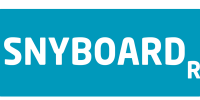Research
The first phase of the project was research. A context mapping study was done. This page contains some of the most important insights gained from literature, an interview and observation. To view the full context mapping report click the link below.
Included in this research phase was insight into the condition of the co-designer (hemiparesis), assistive technology, co-design and human-centred design. Further market and ergonomic research which was done during the design phase is also included.
Context Mapping
The case person has partial paralysis on the left side of the body. Usually, people with this diagnosis need a caregiver. Many caregivers suffer from depression since caring takes most of their time, and diagnosed people are frustrated because they cannot be sufficiently independent. All of that creates an unhealthy environment for people with paralysis. The solution is to empower the person with paralysis as much as possible. Our case owner does not have a caregiver, but they use a cleaning service. A person’s behaviour within the home environment and what challenges the person meets can be observed during interviews and co-designing sessions at their house.
Condition (Hemiparesis)
The reduction of muscular function in a segment of the body is known as paralysis. It occurs when there is a problem in the transmission of signals between the brain and muscles. There are several levels of paralysis: complete and incomplete. That could happen on one or both of the body’s sides. It may either be localised or broad, depending on the situation. Hemiplegia is when only one side of the body is affected. The majority of paralysis cases result from strokes, multiple sclerosis, cerebral palsy, accidents such as broken necks or spinal cord injuries etc.
In the case of our co-designer, ischemic stroke was the cause: stroke appeared due to a decrease in blood flow to a certain area of the brain. The typical symptoms are described in the Persona section.
From this diagnosis, the co-designer has different difficulties in movements. One of them is extending the fingers of their left hand. The case owner wanted our team to focus on that problem. In order to find a solution different physiotherapy techniques were researched. During this research it was found that it is dangerous to apply external force on the left hand otherwise it will worsen the muscle work and make them stiffer. This insight was the main reason why our team decided to change the initial design challenge and move in another direction.
Assistive Technology
Assistive technology enables people to live a healthy, productive, independent and dignified life in all aspects from education and work to societal inclusion, so our team wants our co-designer to use assistive technology in their daily life. For that purpose, it is essential to think about technology abandonment and technology appropriation during the project.
Design appropriation can be achieved using the following principles:
Allow interpretation: Allowing some aspects of the design/system to be interpreted differently by users. Not everything has to have a fixed meaning.
Provide visibility: Make the function of the product/system obvious so users will likely know the outcomes of actions and do what they like.
Expose intentions: Exposing the intention of the design can have people willingly comply but can also elicit people to deliberately go against it and appropriate it for another purpose.
Support not control: Do not fixate on the product/system to achieve a single task but rather assist the user in completing it. Provide functions to complete the task but do not guide the user through all the steps.
Pluggability and configuration: Allow users to change the structure of the product/system in different ways.
Encourage sharing: Allow users to communicate with other ways in which they have appropriated the product/system.
Learn from appropriation: Observing the appropriation can give insights into possible redesigns to better support newly discovered uses.
Appropriation helps to avoid technology abandonment. Moreover, such things as appropriate dimensional fit for the user, and appropriate fit for the needs were taken into account to make a product capable of long-term use, i.e., not to abandon the product. The product should be comfortable, and it should enable the user to perform the task easily.
The pictures to below demonstrate the assistive devices at a person’s house. Some of them are not used how it was planned. For example, a walking stick is not abundant because the co-designer has another better interpretation of use. They use it to open windows.
